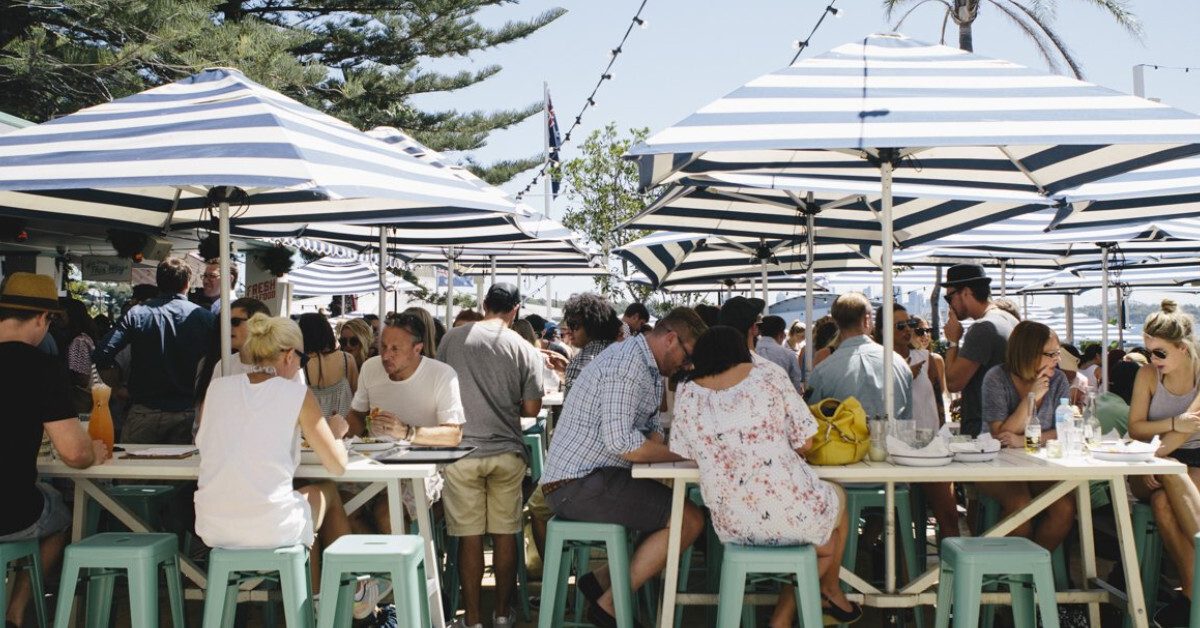The Great Aussie Summer: What Does This Year's Peak Season Have In Store For Hospitality?

Summer is nearly upon us and the festive season is just around the corner. For hospitality, the summer season can be hectic – from Christmas parties to new year celebrations, summer tourists and all-around merriment.
However, after a tumultuous few years of border closures, lockdowns, bushfires and floods, the Aussie hospitality industry hasn’t experienced a peak summer season since 2018.
While the outlook for this year looks better than the previous four, there are still bumps in the road that businesses will have to navigate before the industry can experience a true return to normal.
Much of Australia is still feeling the aftershocks of the pandemic: staff levels remain critically low, inflation is leading to cautious customer spending, and international tourism levels are lower than expected.
With little government support announced in the recent federal budget, many hospitality businesses wonder what the next few months will have in store.
Will the staff shortage crisis continue? Are tourists expected to flock back to Australia this summer? Are customers planning to cut their spending to cope with inflation? Or will the peak summer season fly by without a hitch?
While there are no concrete answers to these questions, we dive into recent industry trends and statistics to understand what this summer has in store for hospitality businesses.
- Inflation: cautious customers curb spending
- Staff shortages: an ongoing crisis
- Tourism: bouncing back?
- How can your venue prepare?
Inflation: cautious customers curb spending
The RBA predicts that inflation in Australia will hit 7.75% by the end of 2022, and the cost of living crisis will carry on into 2023.
Rising inflation has led to a dramatic increase in the cost of living, particularly groceries, fuel, mortgages and utility bills. This means many consumers will actively look to reduce the amount they spend on non-essential items and activities in the coming months.
A recent report found that 75% of Australian consumers are experiencing greater cost of living pressures compared to last year and that eating at home has increased by 38%.
Unfortunately, this change in behaviour will hit hospitality venues hard – from people reducing the number of takeaways they order to cutting out their daily coffees and skipping after-work drinks.
While the cost of living crisis will impact many Australians, hospitality venues face financial insecurity on multiple fronts.
Like everyday Australians, businesses are also feeling the pinch, as inflation is making everyday purchases more expensive, from fresh ingredients to utility bills. Couple this with a potential drop in customers coming through the door, and it’s becoming increasingly more costly for businesses to operate.
What does this mean for your business?
With inflation and the cost of living crisis set to carry on into 2023, hospitality businesses must be realistic about how much customers will spend during the summer season and prepare to experience high operating costs for the foreseeable future.
It’s not all doom and gloom, though. This year is predicted to be much busier than the previous two Covid summers, and while customers will likely be more frugal with their non-essential spending, open borders, lower Covid cases, and the scrapping of mandatory isolation means there will be considerably more foot traffic throughout the summer.
Staff shortages: an ongoing crisis
Staff shortages have been plaguing the hospitality industry since the start of the pandemic, and the issue doesn’t look to be resolved in the near future.
While the federal government recently announced measures to increase immigration, this solution won’t happen overnight, and venues are facing an understaffed, peak summer season.
According to Barcats, one of Australia’s largest hospitality recruitment platforms, Aussie pubs, restaurants, cafes and hotels require 200,000 workers to fill open roles, ranging from baristas to restaurant managers and kitchen staff.
To further reiterate the ongoing staff shortage crisis, Deputy, a popular timesheet and rostering platform, says that 9 out of 10 of its customers, many of whom are hospitality businesses, are searching for new staff.
While the staffing crisis remains the same as in previous months, there’s light at the end of the tunnel, and predictions point to an easing of the staffing crisis in the first half of 2023.
According to recent Seek data, job advertisement numbers in hospitality and tourism slid by 5.4% in September. Yet, applicants per job ad rose 22% – emphasising how the crisis may have reached a turning point.
Seek senior economist Matt Cowgill believes this could be a knock-on effect of rising inflation and reduced customer spending.
“When consumer spending goes down, and business investment goes down, the level of economic activity goes down. There are less goods and services being demanded … [and] less demand for workers.”
What does this mean for your business?
While staff shortages will continue to impact hospitality businesses in the coming months, there’s an end in sight, and venues can expect to find it easier to hire staff in the new year.
This may mean venues are understaffed during the festive seasons, and competition for talent will be fierce. However, industry leaders are pleading with customers to be patient with staff and understanding of longer wait times.
“Be more compassionate to the businesses that are short-staffed and not able to provide the service that they should provide,” commented Deputy CEO Ashik Ahmed “People are at a breaking point.”

Tourism: bouncing back?
Tourism in Australia provides a huge boost to the hospitality industry, particularly during the summer months.
Despite the international border opening to fully vaccinated tourists in February and all restrictions on arrivals being dropped a few months later, international tourism is still massively down on pre-pandemic levels.
According to Statista, there were 8.6 million visitors to Australia in 2019, and this dropped to 6.2 million in 2020, as the international border closed in March 2020.
Despite the border being open to tourists for over eight months in 2022, only 1.8 million visitors have entered the country up until the end of August 2022. This is a decrease of 81% when compared to the same period in 2019.
While international tourism doesn’t look like it’ll pick up to pre-pandemic levels for at least another year, domestic tourism is set for a booming summer.
Wotif data shows that popular domestic destinations like the Gold Coast, Great Ocean Road and the Whitsundays are still top of the list when it comes to holiday bookings between December 2022 and February 2023.
However, their data also shows a surge in holiday bookings in regional areas, with areas such as Ballarat and Toowoomba enjoying a more than 200% hike in interest – which is great news for regional hospitality businesses.
What does this mean for your business?
While this summer will be bigger and busier than the past two years, thanks to open borders and a dramatic reduction in Covid cases, it might not be a bounce back to what we were used to pre-Covid. As a result, hospitality venues should be realistic about the number of customers that might pass through their doors.
Domestic tourists will help to boost hospitality profits across the country during the festive season; however, this may plateau once the new school year starts in February.
While international tourists will visit Australia throughout the summer, these numbers will be much lower than we’re used to, and businesses shouldn’t be surprised if they experience lulls towards the end of summer.
How can your venue prepare?
While there’s no way to know exactly what’s going to happen, it’s safe to assume that this summer is going to be bigger and better than the previous two years. Open borders and reduced Covid cases mean hospitality businesses are in for a smoother ride this summer, with more customers to serve and fear of restrictions a thing of the past.
That’s not to say everything will be a walk in the park, but with increased tourism and some relief to the staffing crisis on the horizon, the hospitality industry can finally start to look forward to a return to normal.
In the coming months, it’s essential to keep your finger on the pulse, so you’re ready to react to any scenario the peak season might throw at you.
From absorbing costs to optimising your menu prices, employing tech to manage gaps in staffing and preparing inventory for a holiday surge – there are several ways you can prepare your venue for the summer ahead. However, the important thing is to weigh up the pros and cons of each option to ensure you’re always making the right decision for your business.

News you care about. Tips you can use.
Everything your business needs to grow, delivered straight to your inbox.


